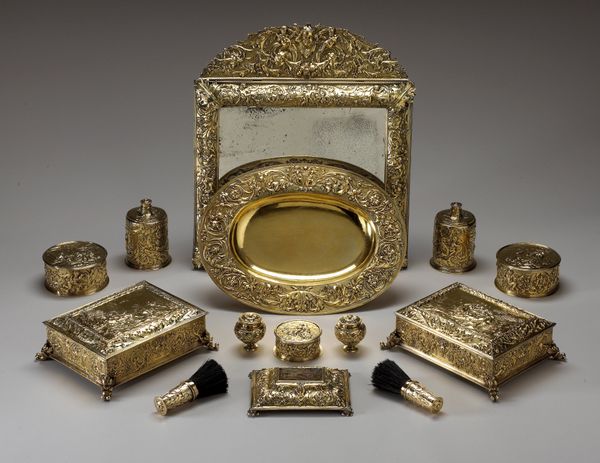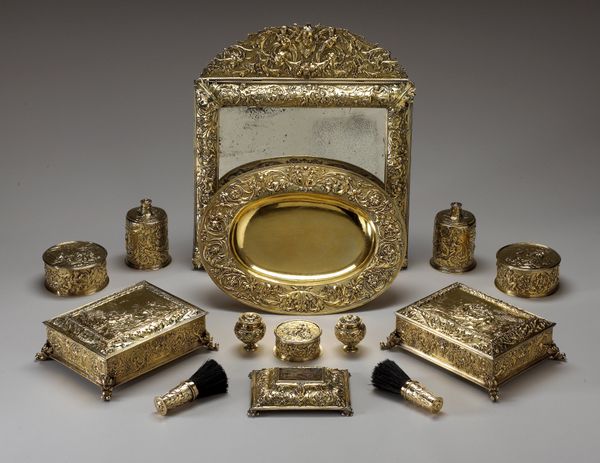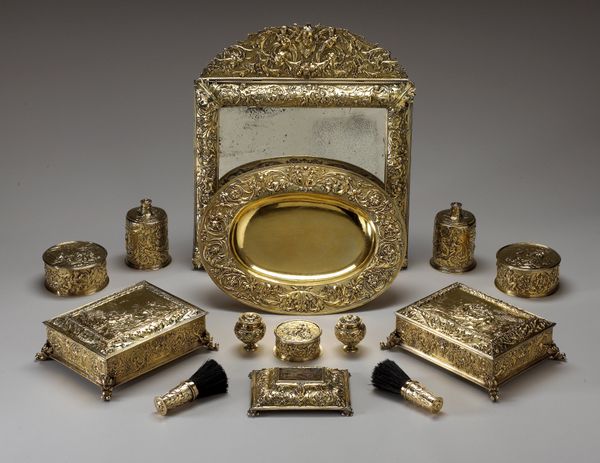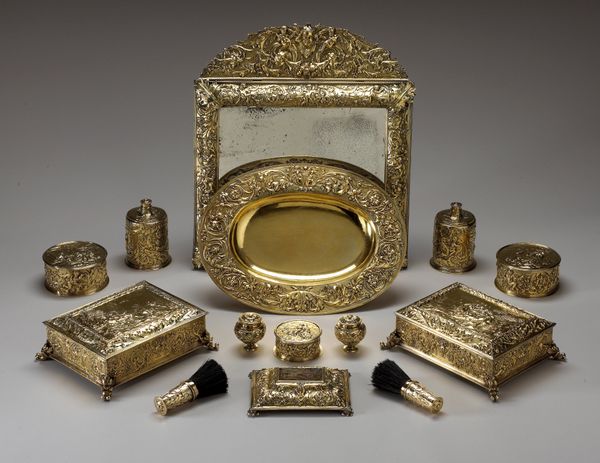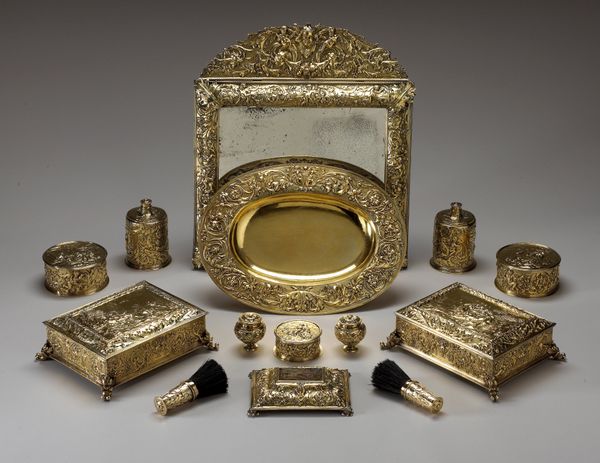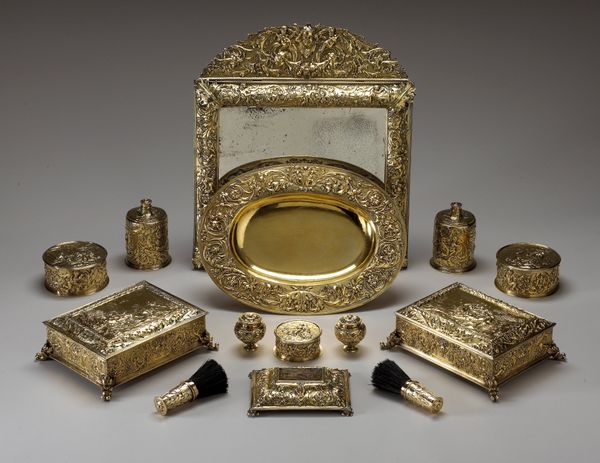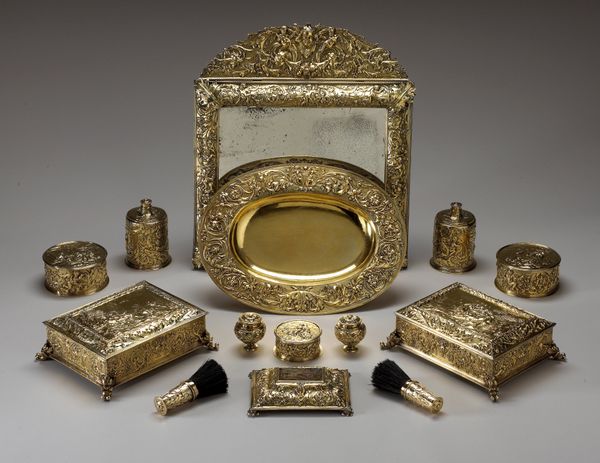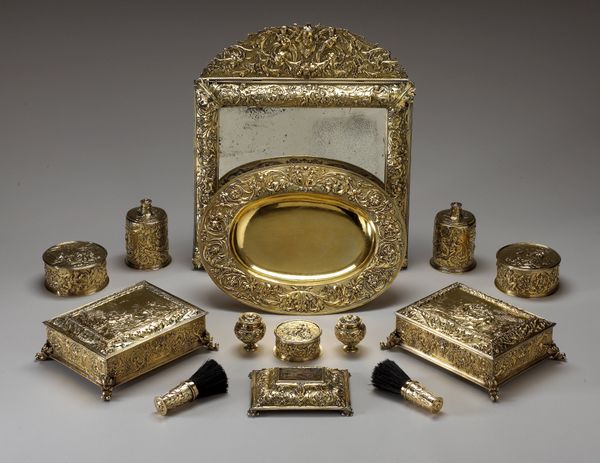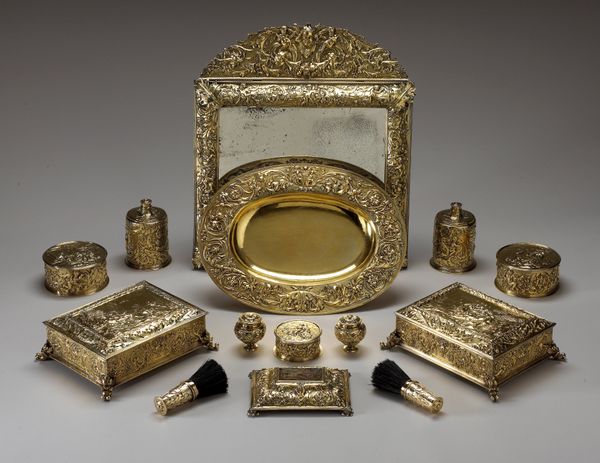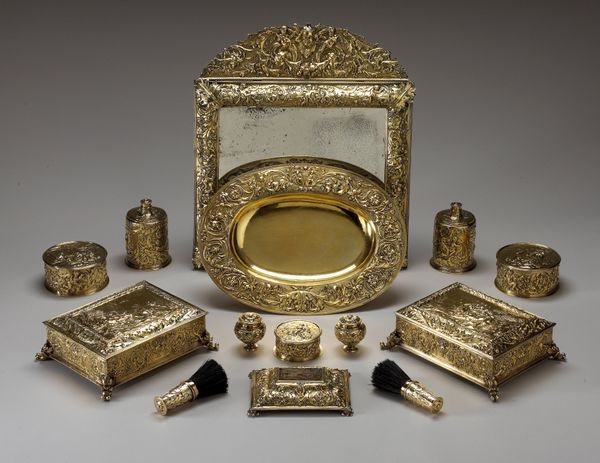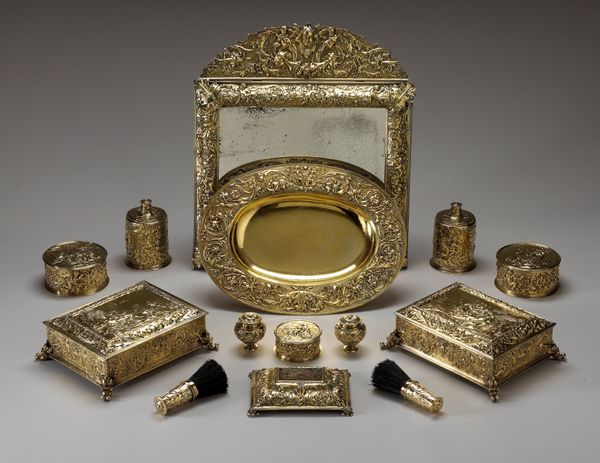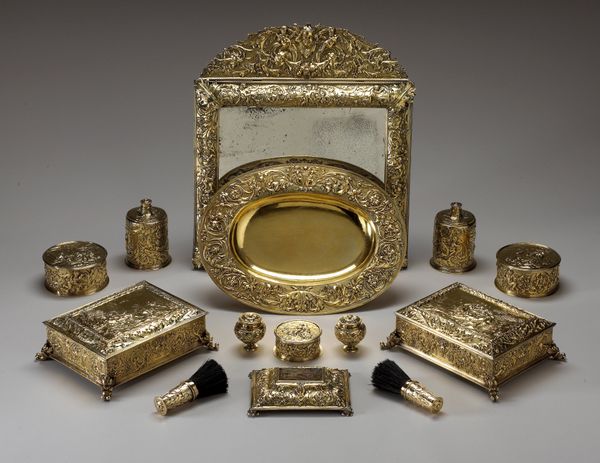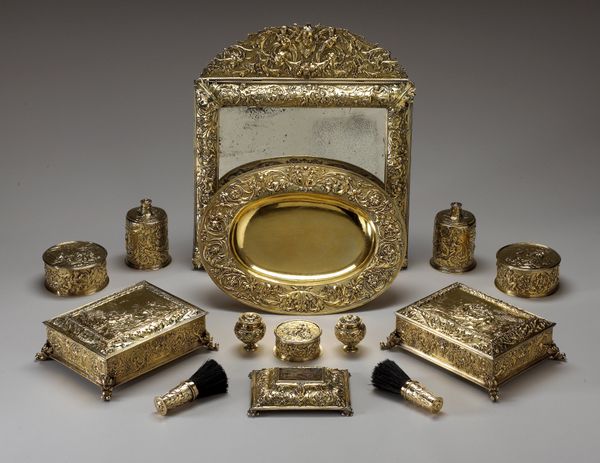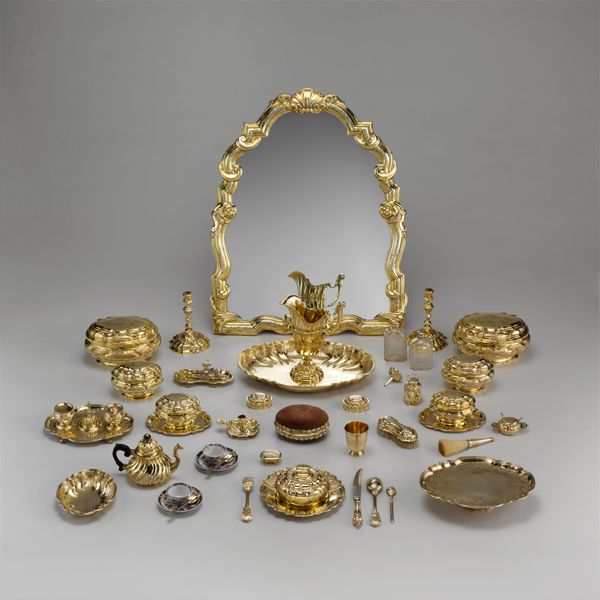
silver, metal, sculpture
#
silver
#
baroque
#
metal
#
england
#
sculpture
#
decorative-art
Dimensions: 20 x 17 1/2 x 1 5/16 in. (50.8 x 44.45 x 3.33 cm)
Copyright: Public Domain
Curator: Today, we're examining a “Mirror on a stand” created around 1683 in England by William Fowle. It resides here at the Minneapolis Institute of Art and is rendered in silver. Editor: My initial reaction is one of overwhelming opulence! It’s more than just a mirror; it's an entire statement, wouldn’t you agree? Everything shimmers. The detailed chasing across each object suggests someone wanted to loudly proclaim their wealth and status. Curator: Indeed. During this period in England, luxury goods became potent signifiers of social standing and political affiliation. The elaborate design and precious material reflect the values of the English Baroque. This wasn't just about functionality; it was a performative display tied to social climbing and image construction, especially relevant after the Restoration period. Editor: Looking closely, the scene work bordering the pieces suggests some classic trope of love and idealized nature, a real escape from the dirt and labor of the working class! Are we to imagine that toilette rituals in England would aspire to such romantic artifice? Curator: It reveals the intimate relationship between power, presentation, and the construction of identity, particularly within the English court. Moreover, we can look to its place within domestic spaces, which transformed drastically from the Elizabethan era onward, as boudoirs and dressing rooms took on the function of mini stages. Who was allowed to occupy, create and direct in those rooms—women? Servants? We may reflect upon what identities are framed, policed, and regulated, quite literally, through the technologies of beauty, presentation, and “the self.” Editor: It seems these weren’t mere grooming rituals but carefully orchestrated performances designed to consolidate class differences, particularly in the way the aristocracy displayed themselves publicly and even in semi-private spaces. To think all that labor, that craft, frozen in a still life of capital, all so some noble could feel adequately empowered and…seen? Curator: Exactly. Consider also the potential implications concerning craft guilds, labour inequities, material supply chains and so much more… Editor: This set truly represents such a specific and self-conscious time. Its resonance lingers.
